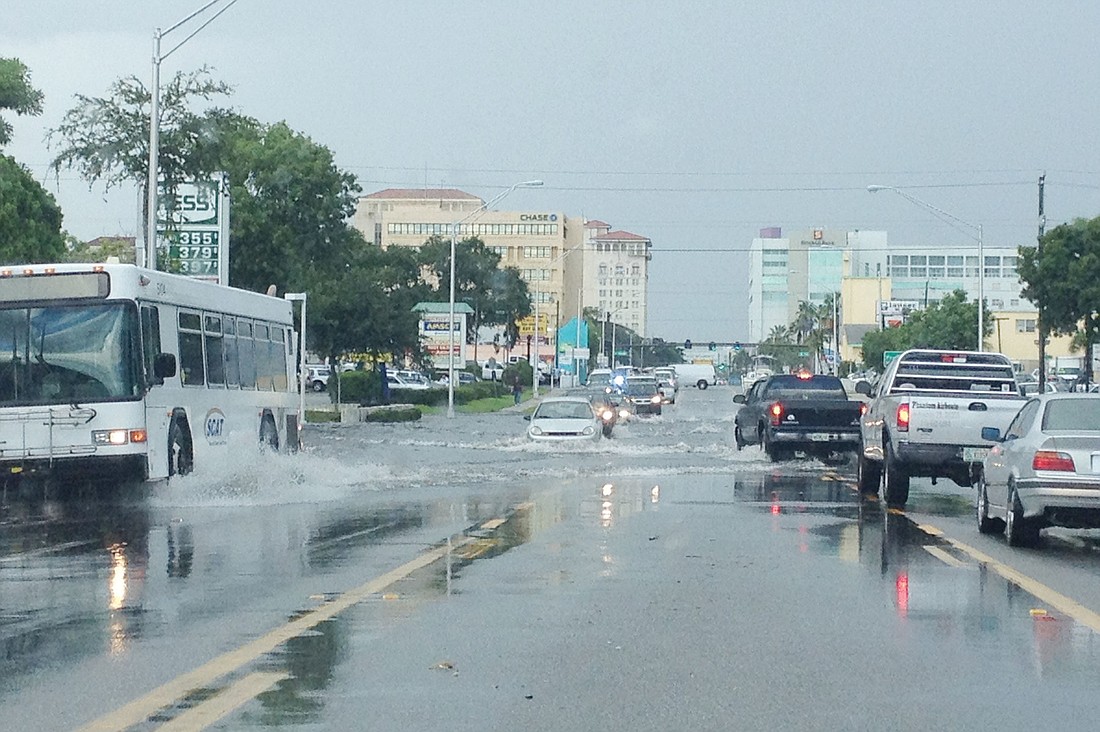- April 25, 2024
-
-
Loading

Loading

For the past few weeks, it’s seemed like clockwork around Sarasota. First, it rains. Then, it floods.
Wet conditions are nothing new in the area, but even those in charge of mitigating the problem are in awe of the amount of flooding that’s taking place in the city and county streets.
“I’ve been here seven years, and I haven’t seen it like this,” Michael DelRossi said.
DelRossi is an engineer in the city’s Public Works department responsible for managing the streets when they’re under water. Molly Williams, the county’s stormwater manager, agreed that the flooding since June was unlike anything she’s seen in several years.
The most significant cause of the flooding is, naturally, the rainfall. It isn’t necessarily just the amount of rain that’s causing water to spill into the streets, though; it’s the consistency.
“With the rainfall happening on such a continuous basis, the ground is saturated,” Williams said. “Some of the rainfall used to infiltrate into the soil. Now, it’s so saturated, it’s not infiltrating nearly as quickly — or at all.”
There are other contributing factors that serve to worsen the constant rain, according to DelRossi. He said the city’s high water table and the flatness of the land makes matters worse. Additionally, the stormwater drainage pipes, which lead into the bay, are under water when the tide is high; this causes water to back up through the drainage system.
Still, DelRossi echoed that this isn’t a problem that will go away until it gets drier.
“You have to wait where you get a couple of days without rain and it saturates into the ground,” DelRossi said. “We don’t get any calls when it hasn’t rained in two weeks.”
DelRossi mentioned another, simpler element that makes matters worse: blocked drains. Palm fronds, pine needles and mulch are among the culprits responsible for clogging the entryways to the drainage system. He said city staff is proactive about looking out for blockages, but called for residents to do their part where they could.
“It would help if people, because sometimes the mulch is coming from their property, if they could look at the storm drains — move aside anything that’s in the storm drain before it rains,” DelRossi said. “Sometimes we just can’t get to it.”
On the county level, one exacerbating element is the age of the stormwater management systems, Williams said.
“Until 1984, there weren’t stormwater regulations that really controlled the stormwater runoff,” Williams said. “Any areas that were built prior to that generally don’t have as well of a defined stormwater-collection system.”
Williams said it wasn’t financially prudent to update the system so that it was better capable of handling the type of rainfall the county has seen recently. The county’s adopted level of service allows for as much as 12 inches of water at the edge of the pavement at some roads before it’s considered a service issue. Although the standards differ from road to road — evacuation routes ideally allow for no water, Williams said — the county is satisfied with maintaining its level of service.
“If we built our systems to handle every single condition and every single rainfall, it’d just cost too much,” Williams said. “We’re looking at using the resources we have to keep the roads and the stormwater system working optimally.”